






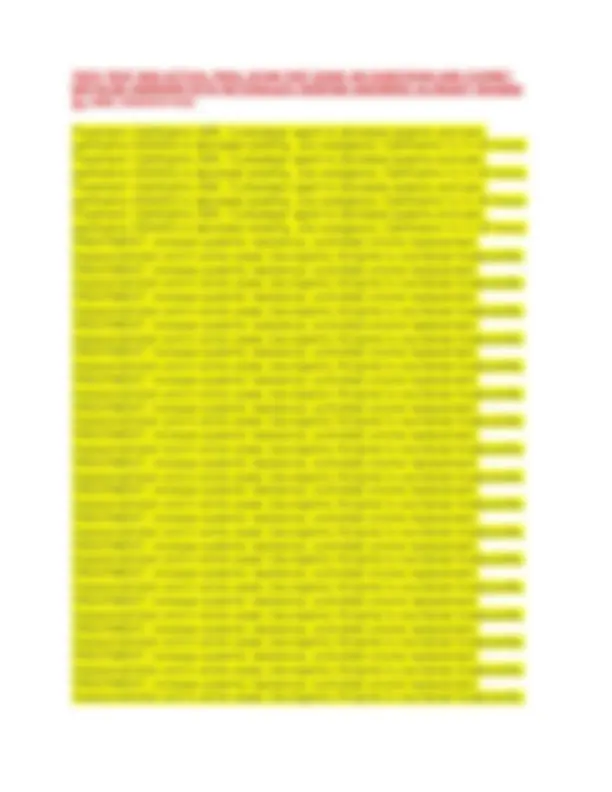
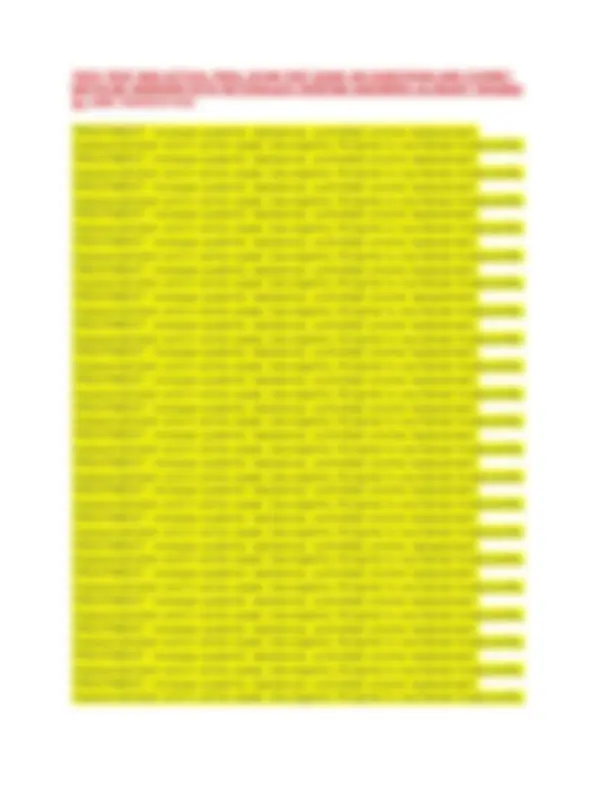





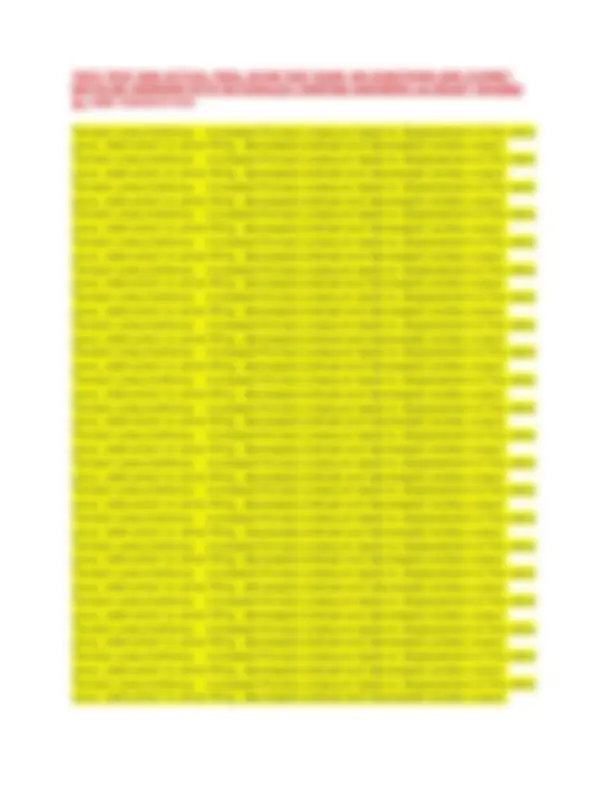









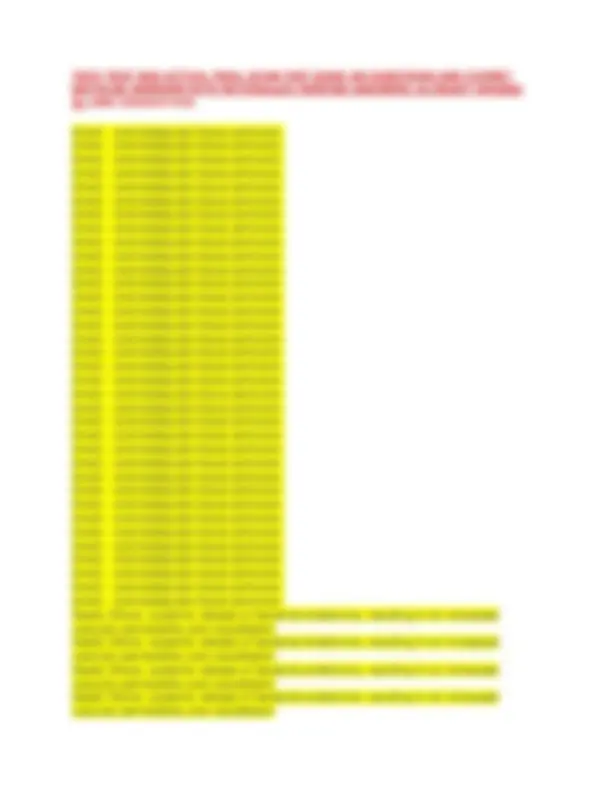

















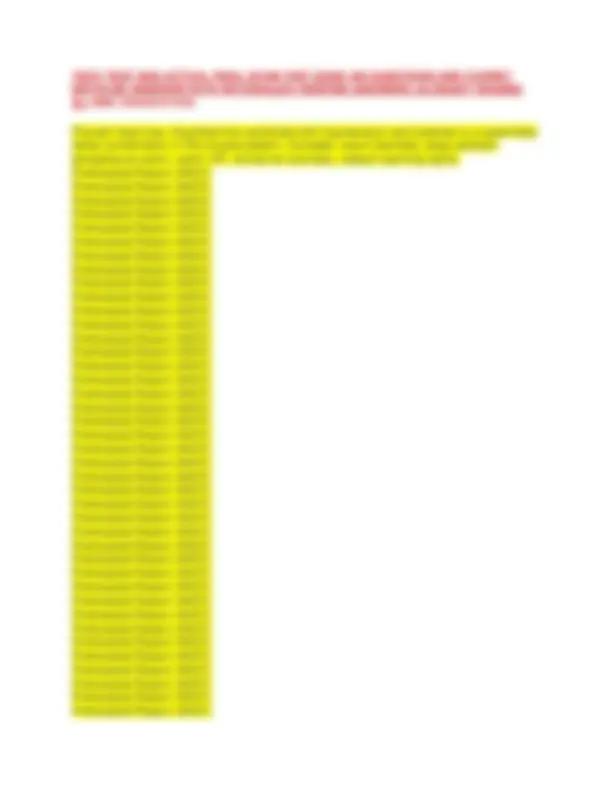

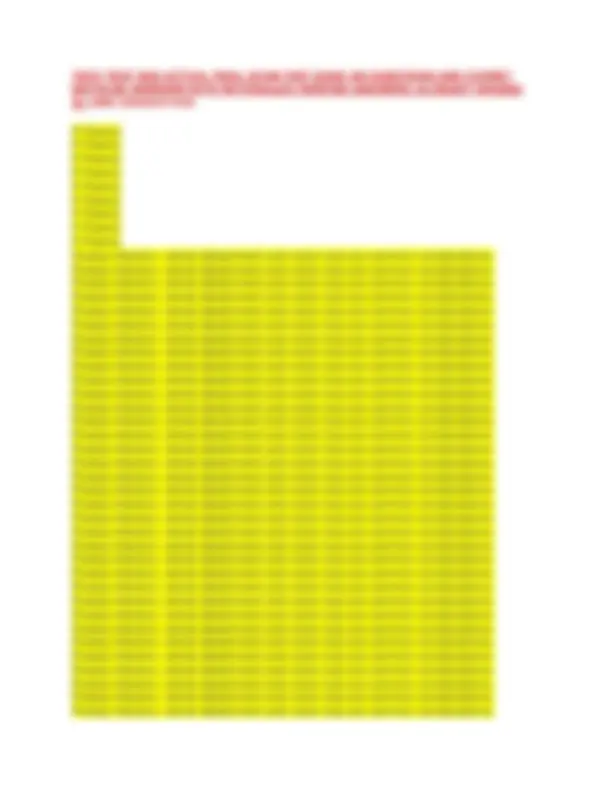




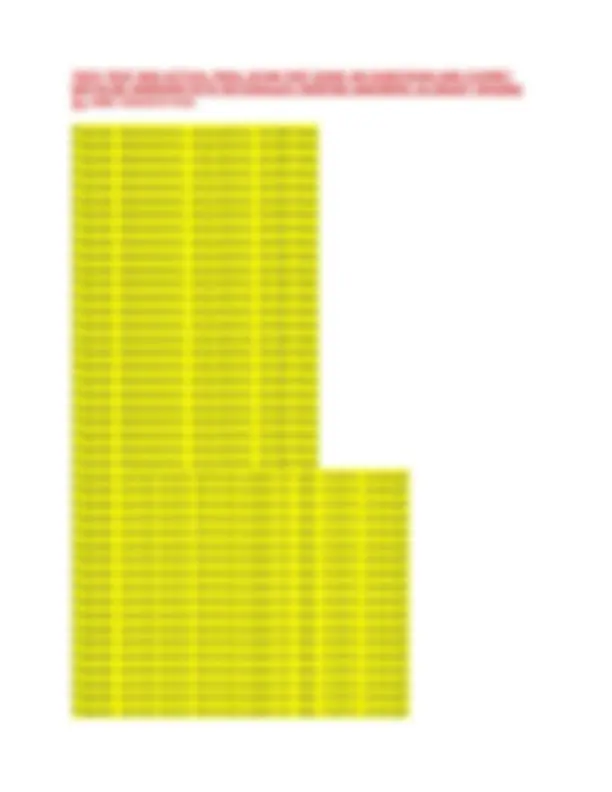
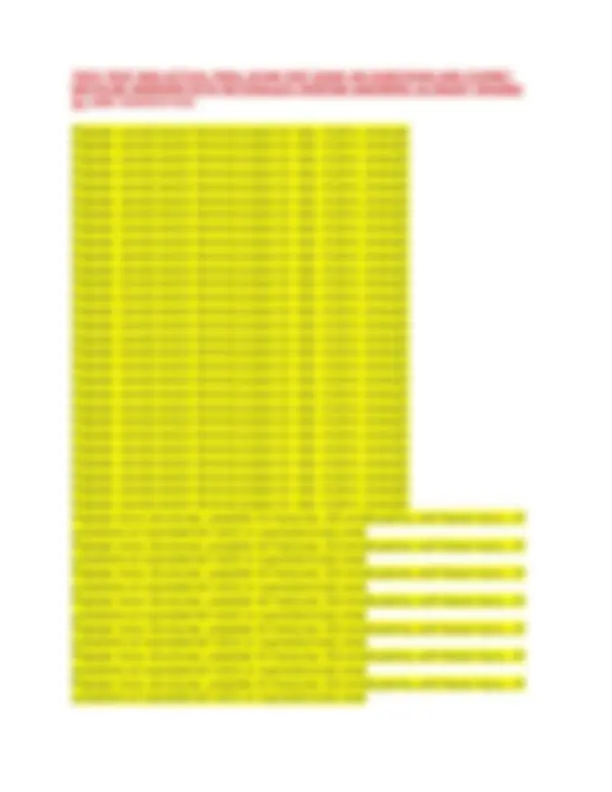


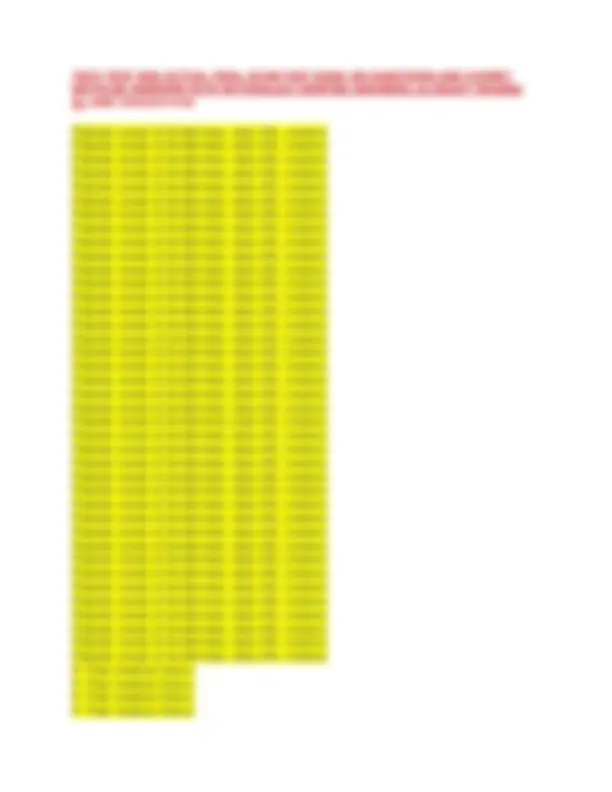




















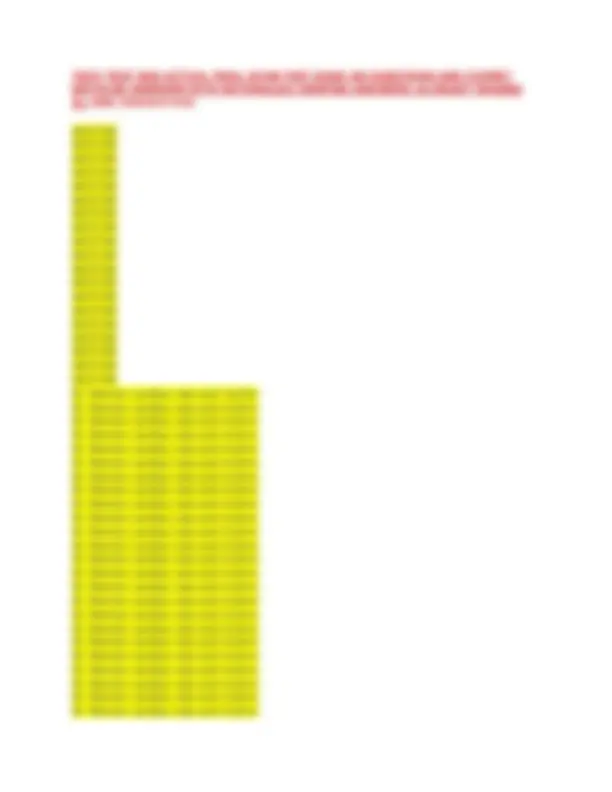
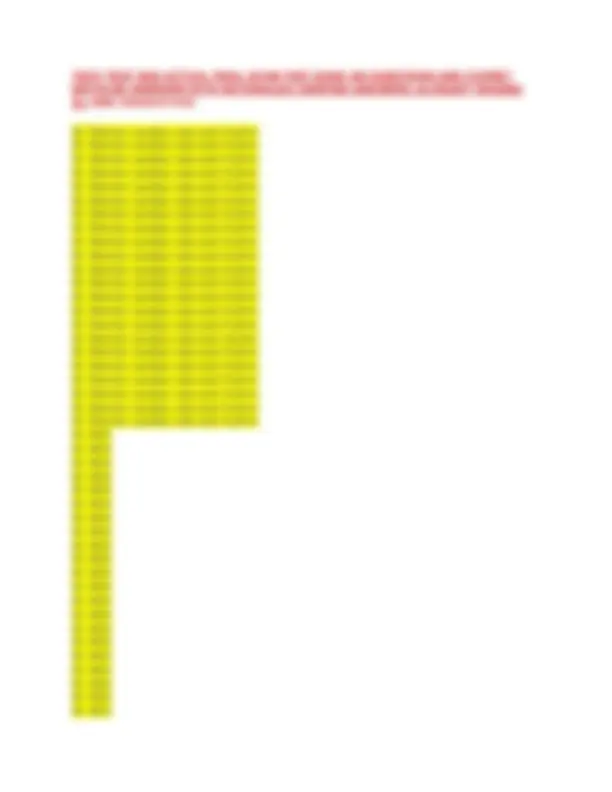


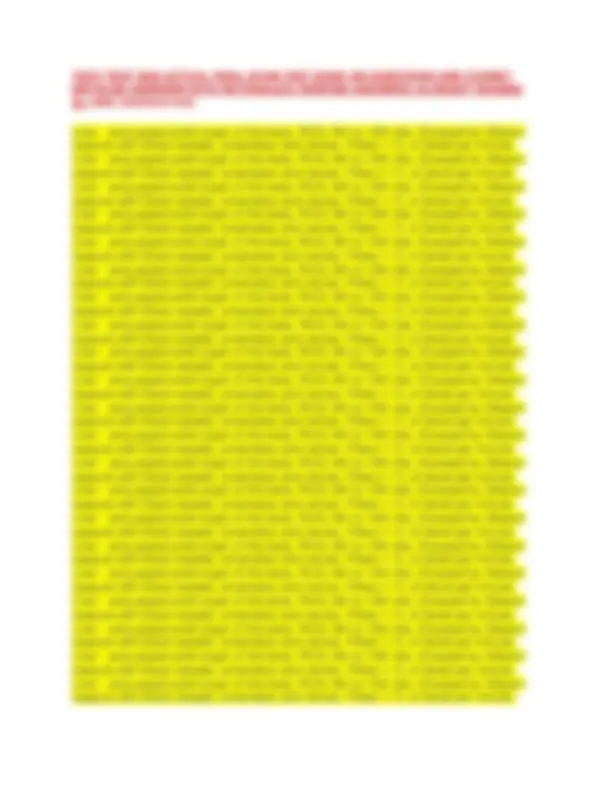



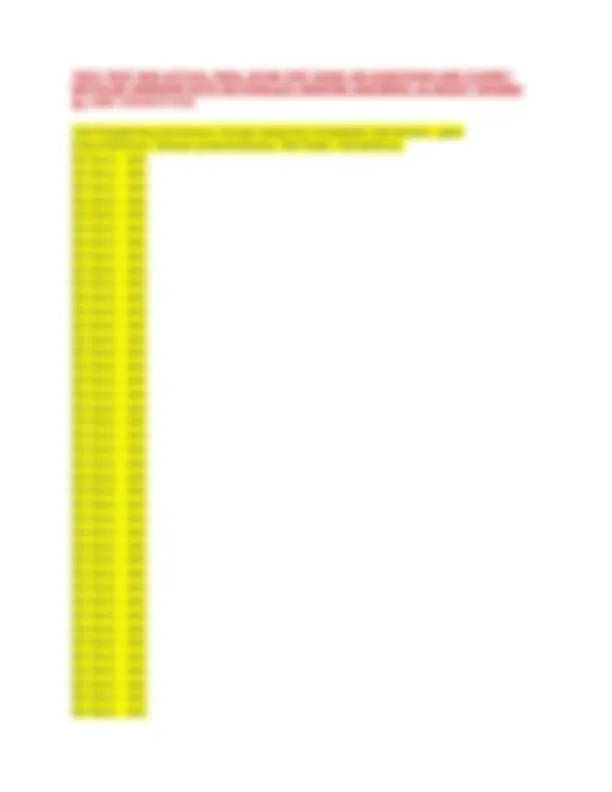
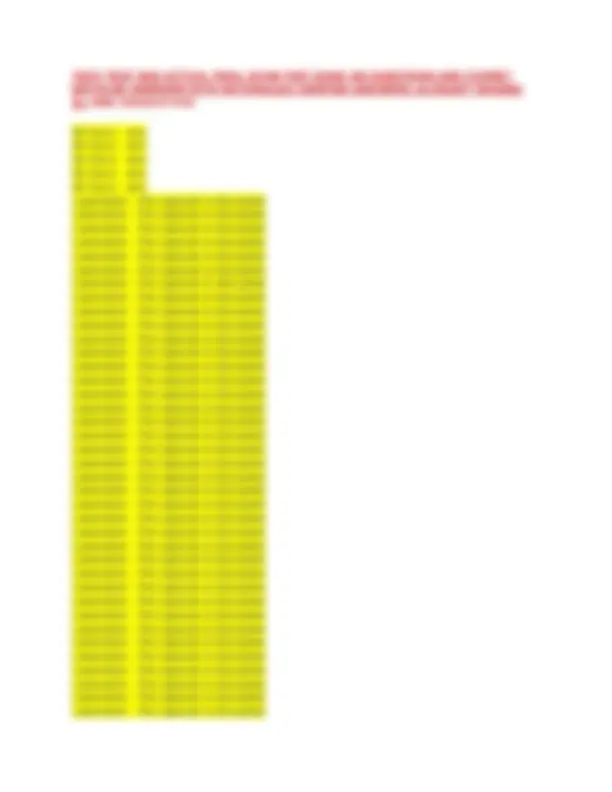

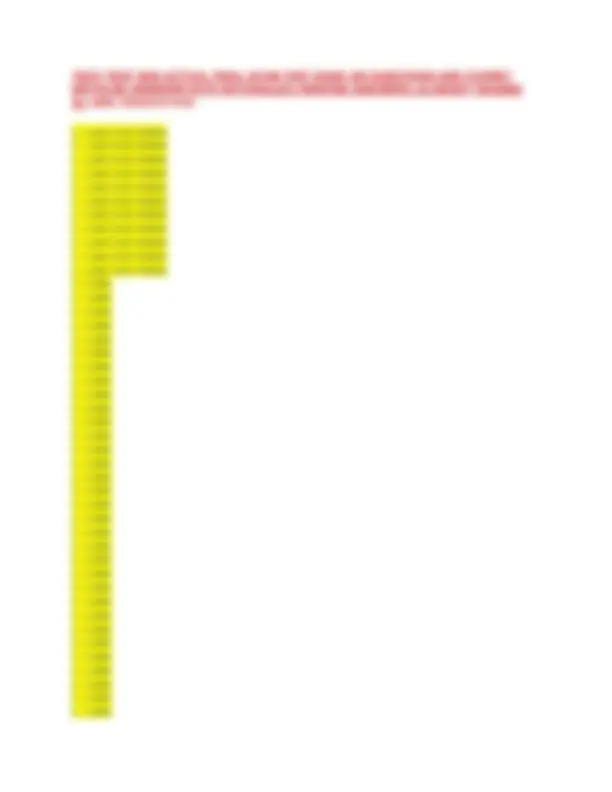
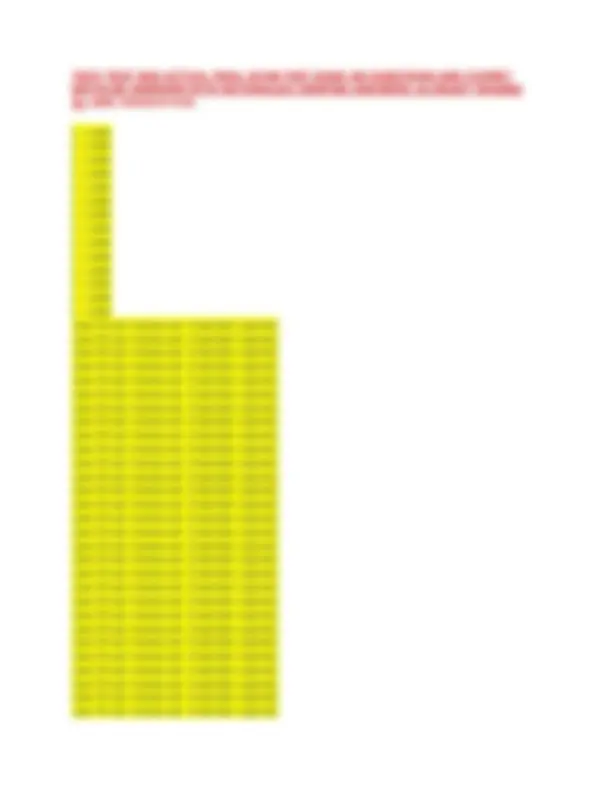








Study with the several resources on Docsity

Earn points by helping other students or get them with a premium plan


Prepare for your exams
Study with the several resources on Docsity

Earn points to download
Earn points by helping other students or get them with a premium plan
Community
Ask the community for help and clear up your study doubts
Discover the best universities in your country according to Docsity users
Free resources
Download our free guides on studying techniques, anxiety management strategies, and thesis advice from Docsity tutors
TNCC TEST 2025 ACTUAL FINAL EXAM TEST BANK 450 QUESTIONS AND CORRET DETAILED ANSWERS WITH RATIONALES (VERIFIED
Typology: Exams
1 / 386

This page cannot be seen from the preview
Don't miss anything!





























































































DETAILED ANSWERS WITH RATIONALES (VERIFIED ANSWERS) |ALREADY GRADED A+|100% COMPLETE PASS While performing an assessment on a 13-month-old involved in a motor vehicle collision, the nurse identifies which of the following findings from the patient as a sign of possible altered mental status? Which of the following is considered a cornerstone of a high-performance trauma team? Which of the following accurately describes ventilation principles associated with use of a bag-mask device for an adult? What is the leading cause of preventable death for the trauma patient in the prehospital environment? What is the best position for maintaining an open airway in the obese patient? What is the best measure of the adequacy of cellular perfusion and can help to predict the outcome of resuscitation? What is the appropriate technique for palpating the pelvis for stability? V-Verbal V-Verbal V-Verbal V-Verbal V-Verbal V-Verbal V-Verbal V-Verbal V-Verbal V-Verbal V-Verbal V-Verbal V-Verbal V-Verbal V-Verbal V-Verbal V-Verbal V-Verbal V-Verbal V-Verbal V-Verbal V-Verbal V-Verbal V-Verbal V-Verbal V-Verbal V-Verbal V-Verbal V-Verbal V-Verbal V-Verbal
DETAILED ANSWERS WITH RATIONALES (VERIFIED ANSWERS) |ALREADY GRADED A+|100% COMPLETE PASS V-Verbal V-Verbal V-Verbal V-Verbal V-Verbal V-Verbal V-Verbal V-Verbal V-Verbal V-Verbal V-Verbal V-Verbal V-Verbal V-Verbal V-Verbal VERBAL VERBAL VERBAL VERBAL VERBAL VERBAL VERBAL VERBAL VERBAL VERBAL VERBAL VERBAL VERBAL VERBAL VERBAL VERBAL VERBAL VERBAL VERBAL VERBAL VERBAL VERBAL VERBAL VERBAL VERBAL VERBAL VERBAL VERBAL
DETAILED ANSWERS WITH RATIONALES (VERIFIED ANSWERS) |ALREADY GRADED A+|100% COMPLETE PASS V (AVPU) - ansVerbal. Needs verbal stimuli to respond. V (AVPU) - ansVerbal. Needs verbal stimuli to respond. V (AVPU) - ansVerbal. Needs verbal stimuli to respond. V (AVPU) - ansVerbal. Needs verbal stimuli to respond. V (AVPU) - ansVerbal. Needs verbal stimuli to respond. V (AVPU) - ansVerbal. Needs verbal stimuli to respond. V (AVPU) - ansVerbal. Needs verbal stimuli to respond. V (AVPU) - ansVerbal. Needs verbal stimuli to respond. V (AVPU) - ansVerbal. Needs verbal stimuli to respond. V (AVPU) - ansVerbal. Needs verbal stimuli to respond. V (AVPU) - ansVerbal. Needs verbal stimuli to respond. V (AVPU) - ansVerbal. Needs verbal stimuli to respond. V (AVPU) - ansVerbal. Needs verbal stimuli to respond. V (AVPU) - ansVerbal. Needs verbal stimuli to respond. V (AVPU) - ansVerbal. Needs verbal stimuli to respond. V (AVPU) - ansVerbal. Needs verbal stimuli to respond. V (AVPU) - ansVerbal. Needs verbal stimuli to respond. V (AVPU) - ansVerbal. Needs verbal stimuli to respond. V (AVPU) - ansVerbal. Needs verbal stimuli to respond. V (AVPU) - ansVerbal. Needs verbal stimuli to respond. U-Unresponsive U-Unresponsive U-Unresponsive U-Unresponsive U-Unresponsive U-Unresponsive U-Unresponsive U-Unresponsive U-Unresponsive U-Unresponsive U-Unresponsive U-Unresponsive U-Unresponsive U-Unresponsive U-Unresponsive U-Unresponsive U-Unresponsive U-Unresponsive U-Unresponsive U-Unresponsive U-Unresponsive U-Unresponsive U-Unresponsive
DETAILED ANSWERS WITH RATIONALES (VERIFIED ANSWERS) |ALREADY GRADED A+|100% COMPLETE PASS U-Unresponsive U-Unresponsive U-Unresponsive U-Unresponsive U-Unresponsive U-Unresponsive U-Unresponsive U-Unresponsive U-Unresponsive U-Unresponsive U-Unresponsive U-Unresponsive U-Unresponsive U-Unresponsive U-Unresponsive U-Unresponsive U-Unresponsive U-Unresponsive U-Unresponsive U-Unresponsive U-Unresponsive U-Unresponsive U-Unresponsive Understanding the kinematic concepts associated with the mechanism of injury and energy transfer can initially assist the trauma care provider in which of the following? U (AVPU) - ansUnresponsive. Does not respond to any stimuli. U (AVPU) - ansUnresponsive. Does not respond to any stimuli. U (AVPU) - ansUnresponsive. Does not respond to any stimuli. U (AVPU) - ansUnresponsive. Does not respond to any stimuli. U (AVPU) - ansUnresponsive. Does not respond to any stimuli. U (AVPU) - ansUnresponsive. Does not respond to any stimuli. U (AVPU) - ansUnresponsive. Does not respond to any stimuli. U (AVPU) - ansUnresponsive. Does not respond to any stimuli. U (AVPU) - ansUnresponsive. Does not respond to any stimuli. U (AVPU) - ansUnresponsive. Does not respond to any stimuli. U (AVPU) - ansUnresponsive. Does not respond to any stimuli. U (AVPU) - ansUnresponsive. Does not respond to any stimuli. U (AVPU) - ansUnresponsive. Does not respond to any stimuli. U (AVPU) - ansUnresponsive. Does not respond to any stimuli. U (AVPU) - ansUnresponsive. Does not respond to any stimuli. U (AVPU) - ansUnresponsive. Does not respond to any stimuli. U (AVPU) - ansUnresponsive. Does not respond to any stimuli. U (AVPU) - ansUnresponsive. Does not respond to any stimuli.
DETAILED ANSWERS WITH RATIONALES (VERIFIED ANSWERS) |ALREADY GRADED A+|100% COMPLETE PASS Treatment: treat small lacerations similar to an abrasion, larger lacerations need ophthalmology referral and possible surgery Treatment: treat small lacerations similar to an abrasion, larger lacerations need ophthalmology referral and possible surgery Treatment: treat small lacerations similar to an abrasion, larger lacerations need ophthalmology referral and possible surgery Treatment: treat small lacerations similar to an abrasion, larger lacerations need ophthalmology referral and possible surgery Treatment: treat small lacerations similar to an abrasion, larger lacerations need ophthalmology referral and possible surgery Treatment: treat small lacerations similar to an abrasion, larger lacerations need ophthalmology referral and possible surgery Treatment: treat small lacerations similar to an abrasion, larger lacerations need ophthalmology referral and possible surgery Treatment: treat small lacerations similar to an abrasion, larger lacerations need ophthalmology referral and possible surgery Treatment: treat small lacerations similar to an abrasion, larger lacerations need ophthalmology referral and possible surgery Treatment: treat small lacerations similar to an abrasion, larger lacerations need ophthalmology referral and possible surgery Treatment: treat small lacerations similar to an abrasion, larger lacerations need ophthalmology referral and possible surgery Treatment: treat small lacerations similar to an abrasion, larger lacerations need ophthalmology referral and possible surgery Treatment: treat small lacerations similar to an abrasion, larger lacerations need ophthalmology referral and possible surgery Treatment: treat small lacerations similar to an abrasion, larger lacerations need ophthalmology referral and possible surgery Treatment: treat small lacerations similar to an abrasion, larger lacerations need ophthalmology referral and possible surgery Treatment: treat small lacerations similar to an abrasion, larger lacerations need ophthalmology referral and possible surgery Treatment: treat small lacerations similar to an abrasion, larger lacerations need ophthalmology referral and possible surgery Treatment: treat small lacerations similar to an abrasion, larger lacerations need ophthalmology referral and possible surgery Treatment: treat small lacerations similar to an abrasion, larger lacerations need ophthalmology referral and possible surgery Treatment: treat small lacerations similar to an abrasion, larger lacerations need ophthalmology referral and possible surgery Treatment: treat small lacerations similar to an abrasion, larger lacerations need ophthalmology referral and possible surgery
DETAILED ANSWERS WITH RATIONALES (VERIFIED ANSWERS) |ALREADY GRADED A+|100% COMPLETE PASS Treatment: treat small lacerations similar to an abrasion, larger lacerations need ophthalmology referral and possible surgery Treatment: treat small lacerations similar to an abrasion, larger lacerations need ophthalmology referral and possible surgery Treatment: treat small lacerations similar to an abrasion, larger lacerations need ophthalmology referral and possible surgery Treatment: treat small lacerations similar to an abrasion, larger lacerations need ophthalmology referral and possible surgery Treatment: treat small lacerations similar to an abrasion, larger lacerations need ophthalmology referral and possible surgery Treatment: treat small lacerations similar to an abrasion, larger lacerations need ophthalmology referral and possible surgery Treatment: treat small lacerations similar to an abrasion, larger lacerations need ophthalmology referral and possible surgery Treatment: treat small lacerations similar to an abrasion, larger lacerations need ophthalmology referral and possible surgery Treatment: treat small lacerations similar to an abrasion, larger lacerations need ophthalmology referral and possible surgery Treatment: treat small lacerations similar to an abrasion, larger lacerations need ophthalmology referral and possible surgery Treatment: treat small lacerations similar to an abrasion, larger lacerations need ophthalmology referral and possible surgery Treatment: treat small lacerations similar to an abrasion, larger lacerations need ophthalmology referral and possible surgery Treatment: treat small lacerations similar to an abrasion, larger lacerations need ophthalmology referral and possible surgery Treatment: treat small lacerations similar to an abrasion, larger lacerations need ophthalmology referral and possible surgery Treatment: treat small lacerations similar to an abrasion, larger lacerations need ophthalmology referral and possible surgery Treatment: treat small lacerations similar to an abrasion, larger lacerations need ophthalmology referral and possible surgery Treatment: treat small lacerations similar to an abrasion, larger lacerations need ophthalmology referral and possible surgery Treatment: topical anesthetic, removal of foreign body, ophthalmic ABX, cycloplegics, oral analgesia Treatment: topical anesthetic, removal of foreign body, ophthalmic ABX, cycloplegics, oral analgesia Treatment: topical anesthetic, removal of foreign body, ophthalmic ABX, cycloplegics, oral analgesia Treatment: topical anesthetic, removal of foreign body, ophthalmic ABX, cycloplegics, oral analgesia
DETAILED ANSWERS WITH RATIONALES (VERIFIED ANSWERS) |ALREADY GRADED A+|100% COMPLETE PASS Treatment: topical anesthetic, removal of foreign body, ophthalmic ABX, cycloplegics, oral analgesia Treatment: topical anesthetic, removal of foreign body, ophthalmic ABX, cycloplegics, oral analgesia Treatment: topical anesthetic, removal of foreign body, ophthalmic ABX, cycloplegics, oral analgesia Treatment: topical anesthetic, removal of foreign body, ophthalmic ABX, cycloplegics, oral analgesia Treatment: topical anesthetic, removal of foreign body, ophthalmic ABX, cycloplegics, oral analgesia Treatment: topical anesthetic, removal of foreign body, ophthalmic ABX, cycloplegics, oral analgesia Treatment: topical anesthetic, removal of foreign body, ophthalmic ABX, cycloplegics, oral analgesia Treatment: topical anesthetic, removal of foreign body, ophthalmic ABX, cycloplegics, oral analgesia Treatment: topical anesthetic, removal of foreign body, ophthalmic ABX, cycloplegics, oral analgesia Treatment: topical anesthetic, removal of foreign body, ophthalmic ABX, cycloplegics, oral analgesia Treatment: topical anesthetic, removal of foreign body, ophthalmic ABX, cycloplegics, oral analgesia Treatment: topical anesthetic, removal of foreign body, ophthalmic ABX, cycloplegics, oral analgesia Treatment: topical anesthetic, removal of foreign body, ophthalmic ABX, cycloplegics, oral analgesia Treatment: topical anesthetic, removal of foreign body, ophthalmic ABX, cycloplegics, oral analgesia Treatment: topical anesthetic, removal of foreign body, ophthalmic ABX, cycloplegics, oral analgesia Treatment: topical anesthetic, removal of foreign body, ophthalmic ABX, cycloplegics, oral analgesia Treatment: topical anesthetic, removal of foreign body, ophthalmic ABX, cycloplegics, oral analgesia Treatment: topical anesthetic, removal of foreign body, ophthalmic ABX, cycloplegics, oral analgesia Treatment: topical anesthetic, removal of foreign body, ophthalmic ABX, cycloplegics, oral analgesia Treatment: topical anesthetic, removal of foreign body, ophthalmic ABX, cycloplegics, oral analgesia Treatment: topical anesthetic, removal of foreign body, ophthalmic ABX, cycloplegics, oral analgesia
DETAILED ANSWERS WITH RATIONALES (VERIFIED ANSWERS) |ALREADY GRADED A+|100% COMPLETE PASS Treatment: Ophthalmic ABX, Cycloplegic agent to decrease spasms and pain, ophthalmic NSAIDS to decrease swelling, oral analgesics, Ophthalmic f/u in 24 hours. Treatment: Ophthalmic ABX, Cycloplegic agent to decrease spasms and pain, ophthalmic NSAIDS to decrease swelling, oral analgesics, Ophthalmic f/u in 24 hours. Treatment: Ophthalmic ABX, Cycloplegic agent to decrease spasms and pain, ophthalmic NSAIDS to decrease swelling, oral analgesics, Ophthalmic f/u in 24 hours. Treatment: Ophthalmic ABX, Cycloplegic agent to decrease spasms and pain, ophthalmic NSAIDS to decrease swelling, oral analgesics, Ophthalmic f/u in 24 hours. Treatment: Ophthalmic ABX, Cycloplegic agent to decrease spasms and pain, ophthalmic NSAIDS to decrease swelling, oral analgesics, Ophthalmic f/u in 24 hours. Treatment: Ophthalmic ABX, Cycloplegic agent to decrease spasms and pain, ophthalmic NSAIDS to decrease swelling, oral analgesics, Ophthalmic f/u in 24 hours. Treatment: Ophthalmic ABX, Cycloplegic agent to decrease spasms and pain, ophthalmic NSAIDS to decrease swelling, oral analgesics, Ophthalmic f/u in 24 hours. Treatment: Ophthalmic ABX, Cycloplegic agent to decrease spasms and pain, ophthalmic NSAIDS to decrease swelling, oral analgesics, Ophthalmic f/u in 24 hours. Treatment: Ophthalmic ABX, Cycloplegic agent to decrease spasms and pain, ophthalmic NSAIDS to decrease swelling, oral analgesics, Ophthalmic f/u in 24 hours. Treatment: Ophthalmic ABX, Cycloplegic agent to decrease spasms and pain, ophthalmic NSAIDS to decrease swelling, oral analgesics, Ophthalmic f/u in 24 hours. Treatment: Ophthalmic ABX, Cycloplegic agent to decrease spasms and pain, ophthalmic NSAIDS to decrease swelling, oral analgesics, Ophthalmic f/u in 24 hours. Treatment: Ophthalmic ABX, Cycloplegic agent to decrease spasms and pain, ophthalmic NSAIDS to decrease swelling, oral analgesics, Ophthalmic f/u in 24 hours. Treatment: Ophthalmic ABX, Cycloplegic agent to decrease spasms and pain, ophthalmic NSAIDS to decrease swelling, oral analgesics, Ophthalmic f/u in 24 hours. Treatment: Ophthalmic ABX, Cycloplegic agent to decrease spasms and pain, ophthalmic NSAIDS to decrease swelling, oral analgesics, Ophthalmic f/u in 24 hours. Treatment: Ophthalmic ABX, Cycloplegic agent to decrease spasms and pain, ophthalmic NSAIDS to decrease swelling, oral analgesics, Ophthalmic f/u in 24 hours. Treatment: Ophthalmic ABX, Cycloplegic agent to decrease spasms and pain, ophthalmic NSAIDS to decrease swelling, oral analgesics, Ophthalmic f/u in 24 hours. Treatment: Ophthalmic ABX, Cycloplegic agent to decrease spasms and pain, ophthalmic NSAIDS to decrease swelling, oral analgesics, Ophthalmic f/u in 24 hours. Treatment: Ophthalmic ABX, Cycloplegic agent to decrease spasms and pain, ophthalmic NSAIDS to decrease swelling, oral analgesics, Ophthalmic f/u in 24 hours. Treatment: Ophthalmic ABX, Cycloplegic agent to decrease spasms and pain, ophthalmic NSAIDS to decrease swelling, oral analgesics, Ophthalmic f/u in 24 hours. Treatment: Ophthalmic ABX, Cycloplegic agent to decrease spasms and pain, ophthalmic NSAIDS to decrease swelling, oral analgesics, Ophthalmic f/u in 24 hours. Treatment: Ophthalmic ABX, Cycloplegic agent to decrease spasms and pain, ophthalmic NSAIDS to decrease swelling, oral analgesics, Ophthalmic f/u in 24 hours.
DETAILED ANSWERS WITH RATIONALES (VERIFIED ANSWERS) |ALREADY GRADED A+|100% COMPLETE PASS Treatment: Ophthalmic ABX, Cycloplegic agent to decrease spasms and pain, ophthalmic NSAIDS to decrease swelling, oral analgesics, Ophthalmic f/u in 24 hours. Treatment: Ophthalmic ABX, Cycloplegic agent to decrease spasms and pain, ophthalmic NSAIDS to decrease swelling, oral analgesics, Ophthalmic f/u in 24 hours. Treatment: Ophthalmic ABX, Cycloplegic agent to decrease spasms and pain, ophthalmic NSAIDS to decrease swelling, oral analgesics, Ophthalmic f/u in 24 hours. Treatment: Ophthalmic ABX, Cycloplegic agent to decrease spasms and pain, ophthalmic NSAIDS to decrease swelling, oral analgesics, Ophthalmic f/u in 24 hours. TREATMENT: increase systemic resistance, controlled volume replacement. Vasoconstriction and in some cases (neurogenic) Atropine to counteract bradycardia. TREATMENT: increase systemic resistance, controlled volume replacement. Vasoconstriction and in some cases (neurogenic) Atropine to counteract bradycardia. TREATMENT: increase systemic resistance, controlled volume replacement. Vasoconstriction and in some cases (neurogenic) Atropine to counteract bradycardia. TREATMENT: increase systemic resistance, controlled volume replacement. Vasoconstriction and in some cases (neurogenic) Atropine to counteract bradycardia. TREATMENT: increase systemic resistance, controlled volume replacement. Vasoconstriction and in some cases (neurogenic) Atropine to counteract bradycardia. TREATMENT: increase systemic resistance, controlled volume replacement. Vasoconstriction and in some cases (neurogenic) Atropine to counteract bradycardia. TREATMENT: increase systemic resistance, controlled volume replacement. Vasoconstriction and in some cases (neurogenic) Atropine to counteract bradycardia. TREATMENT: increase systemic resistance, controlled volume replacement. Vasoconstriction and in some cases (neurogenic) Atropine to counteract bradycardia. TREATMENT: increase systemic resistance, controlled volume replacement. Vasoconstriction and in some cases (neurogenic) Atropine to counteract bradycardia. TREATMENT: increase systemic resistance, controlled volume replacement. Vasoconstriction and in some cases (neurogenic) Atropine to counteract bradycardia. TREATMENT: increase systemic resistance, controlled volume replacement. Vasoconstriction and in some cases (neurogenic) Atropine to counteract bradycardia. TREATMENT: increase systemic resistance, controlled volume replacement. Vasoconstriction and in some cases (neurogenic) Atropine to counteract bradycardia. TREATMENT: increase systemic resistance, controlled volume replacement. Vasoconstriction and in some cases (neurogenic) Atropine to counteract bradycardia. TREATMENT: increase systemic resistance, controlled volume replacement. Vasoconstriction and in some cases (neurogenic) Atropine to counteract bradycardia. TREATMENT: increase systemic resistance, controlled volume replacement. Vasoconstriction and in some cases (neurogenic) Atropine to counteract bradycardia. TREATMENT: increase systemic resistance, controlled volume replacement. Vasoconstriction and in some cases (neurogenic) Atropine to counteract bradycardia. TREATMENT: increase systemic resistance, controlled volume replacement. Vasoconstriction and in some cases (neurogenic) Atropine to counteract bradycardia.
DETAILED ANSWERS WITH RATIONALES (VERIFIED ANSWERS) |ALREADY GRADED A+|100% COMPLETE PASS TREATMENT: increase systemic resistance, controlled volume replacement. Vasoconstriction and in some cases (neurogenic) Atropine to counteract bradycardia. TREATMENT: increase systemic resistance, controlled volume replacement. Vasoconstriction and in some cases (neurogenic) Atropine to counteract bradycardia. TREATMENT: increase systemic resistance, controlled volume replacement. Vasoconstriction and in some cases (neurogenic) Atropine to counteract bradycardia. TREATMENT: increase systemic resistance, controlled volume replacement. Vasoconstriction and in some cases (neurogenic) Atropine to counteract bradycardia. TREATMENT: increase systemic resistance, controlled volume replacement. Vasoconstriction and in some cases (neurogenic) Atropine to counteract bradycardia. TREATMENT: increase systemic resistance, controlled volume replacement. Vasoconstriction and in some cases (neurogenic) Atropine to counteract bradycardia. TREATMENT: increase systemic resistance, controlled volume replacement. Vasoconstriction and in some cases (neurogenic) Atropine to counteract bradycardia. TREATMENT: increase systemic resistance, controlled volume replacement. Vasoconstriction and in some cases (neurogenic) Atropine to counteract bradycardia. TREATMENT: increase systemic resistance, controlled volume replacement. Vasoconstriction and in some cases (neurogenic) Atropine to counteract bradycardia. TREATMENT: increase systemic resistance, controlled volume replacement. Vasoconstriction and in some cases (neurogenic) Atropine to counteract bradycardia. TREATMENT: increase systemic resistance, controlled volume replacement. Vasoconstriction and in some cases (neurogenic) Atropine to counteract bradycardia. TREATMENT: increase systemic resistance, controlled volume replacement. Vasoconstriction and in some cases (neurogenic) Atropine to counteract bradycardia. TREATMENT: increase systemic resistance, controlled volume replacement. Vasoconstriction and in some cases (neurogenic) Atropine to counteract bradycardia. TREATMENT: increase systemic resistance, controlled volume replacement. Vasoconstriction and in some cases (neurogenic) Atropine to counteract bradycardia. TREATMENT: increase systemic resistance, controlled volume replacement. Vasoconstriction and in some cases (neurogenic) Atropine to counteract bradycardia. TREATMENT: increase systemic resistance, controlled volume replacement. Vasoconstriction and in some cases (neurogenic) Atropine to counteract bradycardia. TREATMENT: increase systemic resistance, controlled volume replacement. Vasoconstriction and in some cases (neurogenic) Atropine to counteract bradycardia. TREATMENT: increase systemic resistance, controlled volume replacement. Vasoconstriction and in some cases (neurogenic) Atropine to counteract bradycardia. TREATMENT: increase systemic resistance, controlled volume replacement. Vasoconstriction and in some cases (neurogenic) Atropine to counteract bradycardia. TREATMENT: increase systemic resistance, controlled volume replacement. Vasoconstriction and in some cases (neurogenic) Atropine to counteract bradycardia. TREATMENT: increase systemic resistance, controlled volume replacement. Vasoconstriction and in some cases (neurogenic) Atropine to counteract bradycardia.
DETAILED ANSWERS WITH RATIONALES (VERIFIED ANSWERS) |ALREADY GRADED A+|100% COMPLETE PASS Treatment: elevate HOB, ophthalmology, immobilize foreign body, patch UNAFFECTED eye to limit concomitant eye movement, globe closure ASAP, systemic and ophthalmic ABX, analgesics. Treatment: elevate HOB, ophthalmology, immobilize foreign body, patch UNAFFECTED eye to limit concomitant eye movement, globe closure ASAP, systemic and ophthalmic ABX, analgesics. Treatment: elevate HOB, ophthalmology, immobilize foreign body, patch UNAFFECTED eye to limit concomitant eye movement, globe closure ASAP, systemic and ophthalmic ABX, analgesics. Treatment: elevate HOB, ophthalmology, immobilize foreign body, patch UNAFFECTED eye to limit concomitant eye movement, globe closure ASAP, systemic and ophthalmic ABX, analgesics. Treatment: elevate HOB, ophthalmology, immobilize foreign body, patch UNAFFECTED eye to limit concomitant eye movement, globe closure ASAP, systemic and ophthalmic ABX, analgesics. Treatment: elevate HOB, ophthalmology, immobilize foreign body, patch UNAFFECTED eye to limit concomitant eye movement, globe closure ASAP, systemic and ophthalmic ABX, analgesics. Treatment: elevate HOB, ophthalmology, immobilize foreign body, patch UNAFFECTED eye to limit concomitant eye movement, globe closure ASAP, systemic and ophthalmic ABX, analgesics. Treatment: elevate HOB, ophthalmology, immobilize foreign body, patch UNAFFECTED eye to limit concomitant eye movement, globe closure ASAP, systemic and ophthalmic ABX, analgesics. Treatment: elevate HOB, ophthalmology, immobilize foreign body, patch UNAFFECTED eye to limit concomitant eye movement, globe closure ASAP, systemic and ophthalmic ABX, analgesics. Treatment: elevate HOB, ophthalmology, immobilize foreign body, patch UNAFFECTED eye to limit concomitant eye movement, globe closure ASAP, systemic and ophthalmic ABX, analgesics. Treatment: elevate HOB, ophthalmology, immobilize foreign body, patch UNAFFECTED eye to limit concomitant eye movement, globe closure ASAP, systemic and ophthalmic ABX, analgesics. Treatment: elevate HOB, ophthalmology, immobilize foreign body, patch UNAFFECTED eye to limit concomitant eye movement, globe closure ASAP, systemic and ophthalmic ABX, analgesics. Treatment: elevate HOB, ophthalmology, immobilize foreign body, patch UNAFFECTED eye to limit concomitant eye movement, globe closure ASAP, systemic and ophthalmic ABX, analgesics. Treatment: elevate HOB, ophthalmology, immobilize foreign body, patch UNAFFECTED eye to limit concomitant eye movement, globe closure ASAP, systemic and ophthalmic ABX, analgesics.
DETAILED ANSWERS WITH RATIONALES (VERIFIED ANSWERS) |ALREADY GRADED A+|100% COMPLETE PASS Treatment: elevate HOB, ophthalmology, immobilize foreign body, patch UNAFFECTED eye to limit concomitant eye movement, globe closure ASAP, systemic and ophthalmic ABX, analgesics. Treatment: elevate HOB, ophthalmology, immobilize foreign body, patch UNAFFECTED eye to limit concomitant eye movement, globe closure ASAP, systemic and ophthalmic ABX, analgesics. Treatment: elevate HOB, ophthalmology, immobilize foreign body, patch UNAFFECTED eye to limit concomitant eye movement, globe closure ASAP, systemic and ophthalmic ABX, analgesics. Treatment: elevate HOB, ophthalmology, immobilize foreign body, patch UNAFFECTED eye to limit concomitant eye movement, globe closure ASAP, systemic and ophthalmic ABX, analgesics. Treatment: elevate HOB, ophthalmology, immobilize foreign body, patch UNAFFECTED eye to limit concomitant eye movement, globe closure ASAP, systemic and ophthalmic ABX, analgesics. Treatment: elevate HOB, ophthalmology, immobilize foreign body, patch UNAFFECTED eye to limit concomitant eye movement, globe closure ASAP, systemic and ophthalmic ABX, analgesics. Treatment: elevate HOB, ophthalmology, immobilize foreign body, patch UNAFFECTED eye to limit concomitant eye movement, globe closure ASAP, systemic and ophthalmic ABX, analgesics. Treatment: elevate HOB, ophthalmology, immobilize foreign body, patch UNAFFECTED eye to limit concomitant eye movement, globe closure ASAP, systemic and ophthalmic ABX, analgesics. Treatment: elevate HOB, ophthalmology, immobilize foreign body, patch UNAFFECTED eye to limit concomitant eye movement, globe closure ASAP, systemic and ophthalmic ABX, analgesics. Treatment: elevate HOB, ophthalmology, immobilize foreign body, patch UNAFFECTED eye to limit concomitant eye movement, globe closure ASAP, systemic and ophthalmic ABX, analgesics. Treatment: elevate HOB, ophthalmology, immobilize foreign body, patch UNAFFECTED eye to limit concomitant eye movement, globe closure ASAP, systemic and ophthalmic ABX, analgesics. Treatment: elevate HOB, ophthalmology, immobilize foreign body, patch UNAFFECTED eye to limit concomitant eye movement, globe closure ASAP, systemic and ophthalmic ABX, analgesics. Treatment: elevate HOB, ophthalmology, immobilize foreign body, patch UNAFFECTED eye to limit concomitant eye movement, globe closure ASAP, systemic and ophthalmic ABX, analgesics. Treatment: elevate HOB, ophthalmology, immobilize foreign body, patch UNAFFECTED eye to limit concomitant eye movement, globe closure ASAP, systemic and ophthalmic ABX, analgesics.
DETAILED ANSWERS WITH RATIONALES (VERIFIED ANSWERS) |ALREADY GRADED A+|100% COMPLETE PASS The liver filters out toxins, takes the nutrients and returns the blood to the heart via the hepatic veins. The liver filters out toxins, takes the nutrients and returns the blood to the heart via the hepatic veins. The liver filters out toxins, takes the nutrients and returns the blood to the heart via the hepatic veins. The liver filters out toxins, takes the nutrients and returns the blood to the heart via the hepatic veins. The liver filters out toxins, takes the nutrients and returns the blood to the heart via the hepatic veins. The liver filters out toxins, takes the nutrients and returns the blood to the heart via the hepatic veins. The liver filters out toxins, takes the nutrients and returns the blood to the heart via the hepatic veins. The liver filters out toxins, takes the nutrients and returns the blood to the heart via the hepatic veins. The liver filters out toxins, takes the nutrients and returns the blood to the heart via the hepatic veins. The liver filters out toxins, takes the nutrients and returns the blood to the heart via the hepatic veins. The liver filters out toxins, takes the nutrients and returns the blood to the heart via the hepatic veins. The liver filters out toxins, takes the nutrients and returns the blood to the heart via the hepatic veins. The liver filters out toxins, takes the nutrients and returns the blood to the heart via the hepatic veins. The liver filters out toxins, takes the nutrients and returns the blood to the heart via the hepatic veins. The liver filters out toxins, takes the nutrients and returns the blood to the heart via the hepatic veins. The liver filters out toxins, takes the nutrients and returns the blood to the heart via the hepatic veins. The liver filters out toxins, takes the nutrients and returns the blood to the heart via the hepatic veins. The liver filters out toxins, takes the nutrients and returns the blood to the heart via the hepatic veins. The liver filters out toxins, takes the nutrients and returns the blood to the heart via the hepatic veins. The liver filters out toxins, takes the nutrients and returns the blood to the heart via the hepatic veins. The liver filters out toxins, takes the nutrients and returns the blood to the heart via the hepatic veins.
DETAILED ANSWERS WITH RATIONALES (VERIFIED ANSWERS) |ALREADY GRADED A+|100% COMPLETE PASS The liver filters out toxins, takes the nutrients and returns the blood to the heart via the hepatic veins. The liver filters out toxins, takes the nutrients and returns the blood to the heart via the hepatic veins. The liver filters out toxins, takes the nutrients and returns the blood to the heart via the hepatic veins. The liver filters out toxins, takes the nutrients and returns the blood to the heart via the hepatic veins. The liver filters out toxins, takes the nutrients and returns the blood to the heart via the hepatic veins. The liver filters out toxins, takes the nutrients and returns the blood to the heart via the hepatic veins. The liver filters out toxins, takes the nutrients and returns the blood to the heart via the hepatic veins. The liver filters out toxins, takes the nutrients and returns the blood to the heart via the hepatic veins. The liver filters out toxins, takes the nutrients and returns the blood to the heart via the hepatic veins. The liver filters out toxins, takes the nutrients and returns the blood to the heart via the hepatic veins. The liver filters out toxins, takes the nutrients and returns the blood to the heart via the hepatic veins. The liver filters out toxins, takes the nutrients and returns the blood to the heart via the hepatic veins. The liver filters out toxins, takes the nutrients and returns the blood to the heart via the hepatic veins. The liver filters out toxins, takes the nutrients and returns the blood to the heart via the hepatic veins. The liver filters out toxins, takes the nutrients and returns the blood to the heart via the hepatic veins. The liver filters out toxins, takes the nutrients and returns the blood to the heart via the hepatic veins. The liver filters out toxins, takes the nutrients and returns the blood to the heart via the hepatic veins. The liver filters out toxins, takes the nutrients and returns the blood to the heart via the hepatic veins. The liver filters out toxins, takes the nutrients and returns the blood to the heart via the hepatic veins. The liver filters out toxins, takes the nutrients and returns the blood to the heart via the hepatic veins. The liver filters out toxins, takes the nutrients and returns the blood to the heart via the hepatic veins.